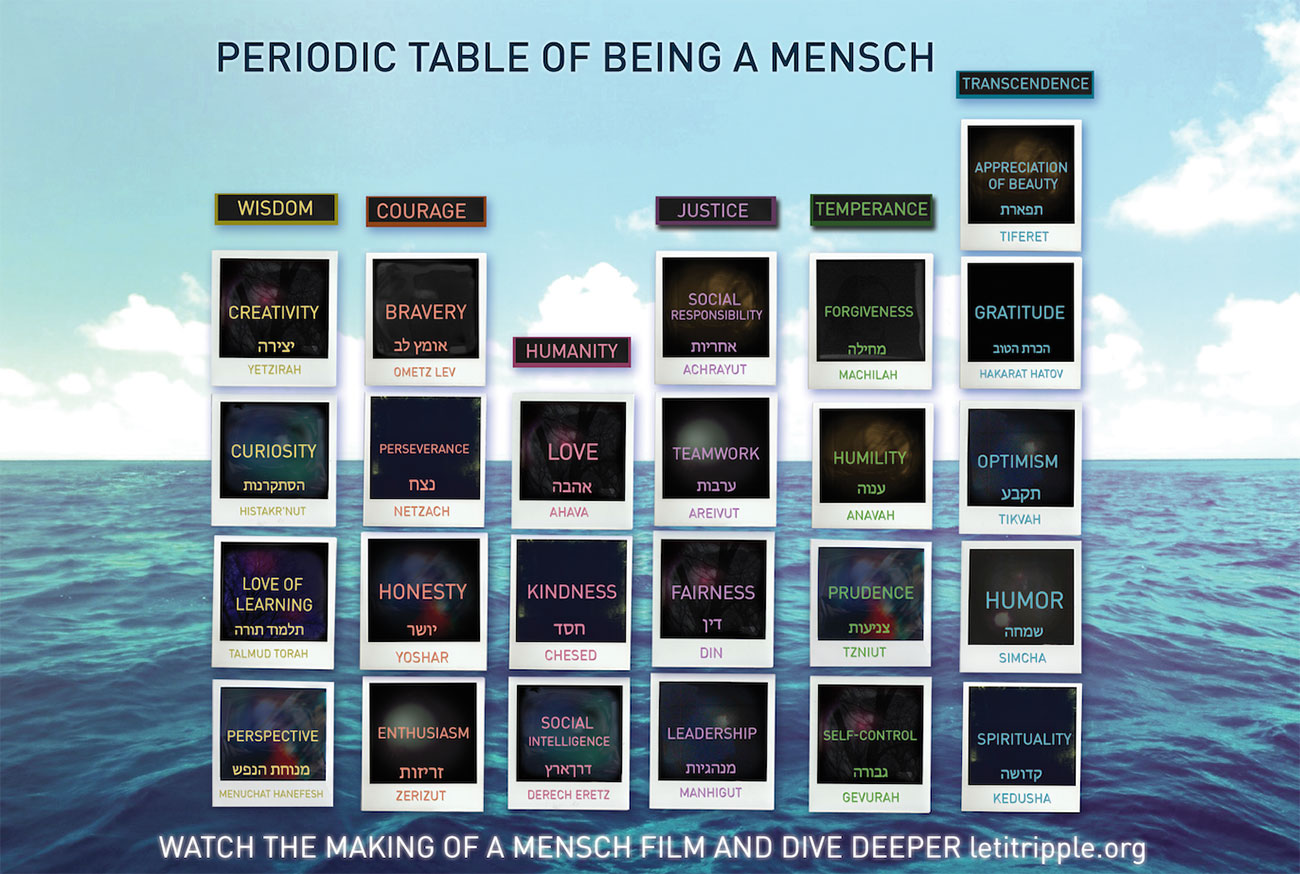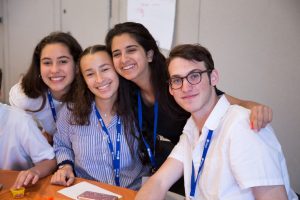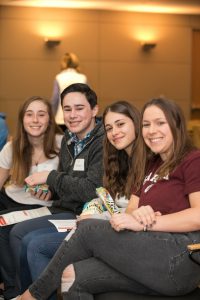This is part 4 of the series in eJewishPhilanthropy, Continuing Conversations on Leveraging Educational Technology to Advance Jewish Learning. The series is a project of Jewish Funders Network, the Jim Joseph Foundation, and the William Davidson Foundation. For an in-depth look at opportunities in Jewish Ed Tech and digital engagement, read Smart Money: Recommendations for an Educational Technology and Digital Engagement Investment Strategy. Later this year, Jewish Funders Network will launch a new website to help advance the field of Jewish educational technology.

There are many professions that require practitioners to participate in ongoing professional development, and rightfully so. After all, for example, we would not want a patient to be treated by an oncologist using 15 year old technologies. Similarly, we should expect our teachers to approach their students with the latest knowledge of learning theories, best practices, and relevant technologies. Yet, professional development is often under-funded and uninspired in our schools.
This reality begs the question: Why is professional development not sufficiently valued in many segments of the world of education? We can surmise that the people responsible for teacher development are often disappointed by the results of these efforts. It is not uncommon for teachers returning from a PD workshop to maintain their previous methods of instruction, even while feigning to adopt new technologies. Principals, supervisors, school board members, and even teachers often fail to see the clear connection between professional development and student achievement.

“Don’t let the tail wag the dog, select and integrate tech tools that solve your most important problems.” – Matt Heinz, President of Heinz Marketing
“calculator” (CC BY 2.0) by ansik
What is needed is sustained and intensive professional development that takes place in the service of a core vision, not simply around technology for its own sake.
Is there a connection between the professional development of teachers and student achievement? Guskey and Yoon address this question in an excellent article entitled “What Works in Professional Development” (Phi Delta Kappan, March 2009) that presents a meta-analysis on research studies relating to the effectiveness of professional development for teachers. They found that the factors shared in effective PD were:
~Common Characteristics that Promote Student Achievement – All studies showed that a positive relationship between professional development and student learning occurred in workshops or summer institutes that:
- focused on research-based instructional practice,
- involved active learning experiences for participants, and
- provided teachers with opportunities to adapt the practices to their unique classroom situations.
~Potential Involvement of Outside Experts – “Professional development that bring improvements in student learning can be gained through the involvement of outside experts. While school based programs focused on training teacher technology integrators within the school might also have value, the research would suggest that consultation with outside experts would also aid in such efforts.”
~Structured and Sustained Time Commitments with Follow–up – Virtually all of the studies showed that programs leading to positive improvements in student learning included significant time commitments with considerable amounts of structured and sustained follow-up after the main professional development activity.
~Adaptation to a Specific Context – The most effective professional development came not from direct implementation of a particular set of best practices, but from the adaptation of varied practices to specific content, process, and context elements.
The authors pointed out that “no improvement effort has ever succeeded in the absence of thoughtfully planned and well implemented professional development.”
The importance of professional development is currently more relevant than ever in the education world. Student learning has transformed with the development and accessibility of the internet. It can also be greatly enriched through the proper use of online tools. Already in 2010, the U. S. Department of Education concluded: “As online learning becomes an increasingly important part of our educational system, it creates both the need for educators who are skilled in online instruction and the demand for greater knowledge of the most effective practices.”
How can we ensure that PD in EdTech is achieving its goals?
I discovered some highlights in Nik Peachey’s “12 Tips for Training Older Teachers to Use Technology.” Three of my favorites were that PD in EdTech has to:
- Solve Classroom Problems
- Do things that can’t be done any other way
- Make their lives easier; provide step by step guides.
In my experience in presenting JETS workshops, I have discovered three types of participants:
1. Good to go: Early Implementers:
After I demonstrate a tool, this group is already implementing, creating samples, asking questions that apply to their learning environment and focusing on specific and predicted challenges to implementation. There is no doubt they will successfully implement this tool with minimal feedback, and they will troubleshoot on their own or seek support quickly. It is not uncommon for me to hear from principals after a PD session with their teachers informing me (often with a sense of astonishment) that some of their teachers have already begun to implement the tools and methods that they learned in their classroom instruction. For example: “The evening training was very useful. We already have several teachers using lino boards in the classroom!”
2. Hold My Hand: Medium Implementers:
These participants carefully consider the pros and cons of the tools, and need to weigh in with the facilitator in both the theory and its practical implementation. If both the dialogue and the experimentation process are met with positive results, there is a high chance of successful implementation. These teachers will be more likely to implement if there is someone who seeks them out and assists them to ensure successful application. It is always gratifying to see when this type of learner puts the pieces together: “I’m finally seeing ways to honor the text and use technology at the same time.”
3. Not a Chance: Late to Never Implementers:
Resistance is the key word for these educators. Due to a variety of factors (age, fear, habit, prefer to work alone), these participants will spend the majority of the workshop discussing the challenges. A small percentage, with lots of hand holding, will dare to create in a group setting, but there are very small chances that their students will ever hold an iPad or device to use the tool. However, some are eventually willing to try and succeed. One such participant gave me the following advice: “Scaffolding a bit more for “dinosaur” learners like myself.” This person has become a strong advocate for the use of EdTech in her school.
How to turn Category 3 into Category 2, and Category 2 into Category 1 implementers?
I’ve explored a variety of options, and the more you use, the more successful you will be. Consider some of these:
Administrators need to have a plan. What are the EdTech goals this year and how will they be implemented? What are the reasons for promoting these particular tools?
Which measures will be taken to ensure that all teachers are on board? How clear are teachers about the school’s goals? How can teachers add to that conversation?
The school administration needs to provide a lot of support.
How can teachers feel supported?
This can be done by arranging for someone to turn to for troubleshooting and experimentation; either a teacher peer with EdTech experience or by setting meetings with an EdTech director at the school.
Schools should also engage in frequent discussion about the efficacies, as well as the ins and outs of tool usage through school communication, staff meetings, peer mentoring, online communication and the like.
Systems should be put in place to promote feedback among peers and the administration about tool implementation. Schools should consider who is monitoring the implementation, set standards of usage and follow-up, and analyze how teachers are progressing towards those goals.
Care should be taken to validate teachers’ efficacy as educators. Category 3 teachers can and should be excellent teachers; promote their skills as pedagogues and promote how EdTech can enhance that pedagogical approach even further.
During professional development days, EdTech experimentation should be explored. Schools can also encourage trial and error and provide peer and administrative support in and out of the school setting. However, PD sessions should be catered to the needs of Category 1, 2, and 3 teachers, and resist whole group sessions that combines all the teachers together. These teachers’ needs and attitudes are very different and PD times should address them at their own level, in their own groups. As a Category 1 educator once mentioned regarding her PD time at her school, “I was in the same room as a colleague who didn’t know how to turn on her iPad.”
The focus of PD time and peer mentoring should be on the practicality of the use of current pedagogies, online tools and methodologies that creatively maximize student engagement, foster social and collaborative learning, and assist educators to adapt tools to their particular needs.
In line with Guskey and Yoon’s findings, I have found that continued support is a very important ingredient in effective EdTech training programs. In particular, in my experience, our professional whatsapp group, our online EdTech Support Center, supplemental webinars, personalized consultation and teacher mentoring (online or face to face) have been invaluable for teachers to go from theory to practice, and from technophobes to implementers.
Discovering and Reaching New Horizons
If PD in EdTech is going to be taken seriously, then serious approaches need to be offered to teachers. Teachers need to feel the need for it, be given the space and time to try it, and have sufficient support to feel successful and empowered.
The good thing about changing PD in EdTech is that once support measures are implemented, it will work like balloons in the movie ‘Up!’ – each empowered teacher will add their string to the shifting realm of education until both students and educators are flying toward previously unseen horizons.
Smadar Goldstein, the founder of JETS, has presented PD workshops on integrating educational technology and related methodologies in Jewish studies instruction to more than 900 educators in nine countries. [email protected].










 For funders who are uncomfortable with the risks associated with innovation and experimentation there is still room to meaningfully contribute. This can be achieved by supporting knowledge management and best practices about effective solutions. And also by actively participating in mobilization of resources for scaling and sustaining successful innovations.
For funders who are uncomfortable with the risks associated with innovation and experimentation there is still room to meaningfully contribute. This can be achieved by supporting knowledge management and best practices about effective solutions. And also by actively participating in mobilization of resources for scaling and sustaining successful innovations.




 Building knowledge for the ecosystem
Building knowledge for the ecosystem






 The
The  In addition to information about each community initiative within the Collaborative, extensive research on teens, and reflections from practitioners on the ground, the website shares two new items: the
In addition to information about each community initiative within the Collaborative, extensive research on teens, and reflections from practitioners on the ground, the website shares two new items: the  The communities in the Funder Collaborative are Atlanta, Baltimore, Boston, Chicago, Cincinnati, Denver, Los Angeles, New York, San Diego, and San Francisco. Teen initiatives that have been launched by Funder Collaborative communities include a range of Jewish experiences—from volunteer service to professional internships to surfing and more. Nearly all communities attribute early programmatic successes to their participation in the collaborative and its steadfast commitment to knowledge-sharing. The evolution of the collaborative itself is central to creating an environment that fosters risk-taking, experimentation and ongoing reflection.
The communities in the Funder Collaborative are Atlanta, Baltimore, Boston, Chicago, Cincinnati, Denver, Los Angeles, New York, San Diego, and San Francisco. Teen initiatives that have been launched by Funder Collaborative communities include a range of Jewish experiences—from volunteer service to professional internships to surfing and more. Nearly all communities attribute early programmatic successes to their participation in the collaborative and its steadfast commitment to knowledge-sharing. The evolution of the collaborative itself is central to creating an environment that fosters risk-taking, experimentation and ongoing reflection.